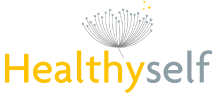What is musculoskeletal treatment?
A wide range of problems can be helped, but generally treatment can help with most musculo-skeletal pain including back and neck pain, shoulder and arm pain, pelvis, hip and leg problems, sports and other musculo-skeletal injuries.
Who can benefit?
People of all ages can benefit from treatment, from newborn babies, pregnant women, children, and adults to the elderly. I have experience in treating all sorts of different people at different life stages, and am able to adapt my techniques to suit the individual and their requirements.
What to expect?
The initial consultation lasts an hour which includes taking a full case history, physical examination and treatment if appropriate. I will ask you details about your current problem as well as general medical questions. For the examination, you will normally be required to undress down to your underwear (please choose wisely so that you feel comfortable) although you may remain clothed if you prefer. I then carry out a physical examination to assess your posture and the movements of your spine and limbs, looking at muscle tone and strength, and perform other clinical tests such as checking neurological reflexes and blood pressure if necessary.
Once I have reached a working diagnosis, I will discuss my findings with you and explain what I think is causing the problem. We will then talk about the treatment options to ensure a safe and effective approach. If necessary, I will seek your consent to liaise with your GP to include them in the management of your case.
 What does treatment involve?
What does treatment involve?
Treatment is hands-on, and a combination of manual techniques will be used according to what is appropriate for the individual. These may include soft tissue massage, rhythmic joint articulation, manipulation, muscle energy and myo-fascial release, and the very gentle ‘unwinding’ of cranial work. Gentle cranial techniques use skilled light touch called palpation to release stress patterns and tensions in the body. It is called cranial because the head is often treated, however, this is a bit of a misnomer and the whole body can be treated in this way, not just the head.
Treatment aims to address the cause of the problem and may or may not include work on the specific area that is painful, depending how inflamed it is. I will also work more generally in order to help balance and integrate the whole body, and endeavour to address the root cause of the problem. Postural advice and rehabilitative exercises will be offered to assist recovery and raise awareness of poor habits that may be contributing factors.
If you’ve had treatment before, you will also find that practitioners have different approaches to each other. This is often down to the practitioner’s preferred way of working as they have developed their skills whilst studying and since qualifying. While manipulation can be suitable for some people, it is not an essential part of a session. Some people prefer to have strong treatment while others prefer the more gentle cranial approach. As treatment is patient led, we can decide together the approach that best suits you. Treatment is always a two-way process.




